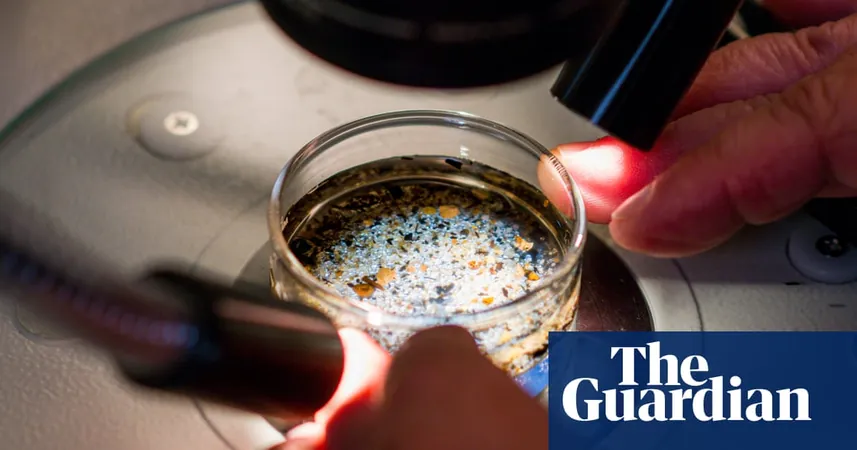
Breaking Discovery: Microplastics Now Detected in Human Ovarian Fluid — What This Means for Women's Health
2025-04-19
Author: Liam
Unprecedented Findings Raise Fertility Concerns
In a groundbreaking revelation, researchers have detected microplastics in human ovarian follicular fluid for the first time, igniting serious concerns about their effects on women’s fertility. This new study, published in the journal Ecotoxicology and Environmental Safety, conducted tests on 18 women undergoing assisted reproductive treatments at a fertility clinic in Salerno, Italy, with alarming results: microplastics were found in 14 of the samples.
The Role of Follicular Fluid
Follicular fluid is crucial for nourishing developing eggs, and the contamination of this vital process with microscopic plastic pollutants could endanger fertility, disrupt hormonal balance, and threaten overall reproductive health, according to study lead author Luigi Montano from the University of Rome.
Microplastics: A Global Menace
From the highest peaks to the deepest oceans, microplastics infiltrate our environment, primarily entering human bodies through food. Recent studies have confirmed their presence in almost all tested meat and produce products, posing a grave risk.
Toxic Chemical Alarm
Microplastics are especially perilous because they often harbor over 16,000 different plastic chemicals, including known toxins like PFAS, bisphenols, and phthalates—all linked to cancer, hormone disruption, neurotoxicity, and various developmental issues. Studies indicate that these plastics can permeate the brain and placental barriers, thus affecting reproductive health.
Potential Links to Fertility Decline
Montano, who has previously identified microplastics in human urine and semen, believes these pollutants could contribute to the alarming decline in sperm counts and overall sperm quality. "We have documented this decrease, particularly in pollution-heavy areas," he stated, highlighting the growing urgency of the issue.
Animal Studies Warn of Risks to Women
While men may exhibit higher susceptibility to the toxic effects of microplastics, women are not immune. Research on animals has suggested a connection between microplastics and ovarian dysfunction, evidenced by reduced oocyte maturation and lower fertilization capacity. One mouse study found notable alterations to ovarian tissue.
The Need for Further Research
While the study indicates a potential correlation between microplastic presence and reproductive health, experts like Xiaozhong Yu from the University of New Mexico stress the need for additional research. "This is just the beginning; we must determine the thresholds of exposure that lead to harmful effects," Yu urged.
Cutting Down on Plastic Exposure
With microplastics now prevalent in our lives, mitigating exposure is crucial. Montano is leading research aimed at understanding how reducing plastic use in home kitchens and adopting organic diets could lower microplastic levels in our bodies. Experts recommend minimizing plastic use for storage, packaging, and utensils, along with avoiding heating plastic or using it with hot food.
A Call to Action for Women's Health
This alarming discovery serves as a wake-up call for scientists, policymakers, and women everywhere. As we uncover the pervasive impacts of microplastics on reproductive health, it’s imperative that we take steps to protect our bodies and our future generations.









 Brasil (PT)
Brasil (PT)
 Canada (EN)
Canada (EN)
 Chile (ES)
Chile (ES)
 Česko (CS)
Česko (CS)
 대한민국 (KO)
대한민국 (KO)
 España (ES)
España (ES)
 France (FR)
France (FR)
 Hong Kong (EN)
Hong Kong (EN)
 Italia (IT)
Italia (IT)
 日本 (JA)
日本 (JA)
 Magyarország (HU)
Magyarország (HU)
 Norge (NO)
Norge (NO)
 Polska (PL)
Polska (PL)
 Schweiz (DE)
Schweiz (DE)
 Singapore (EN)
Singapore (EN)
 Sverige (SV)
Sverige (SV)
 Suomi (FI)
Suomi (FI)
 Türkiye (TR)
Türkiye (TR)
 الإمارات العربية المتحدة (AR)
الإمارات العربية المتحدة (AR)